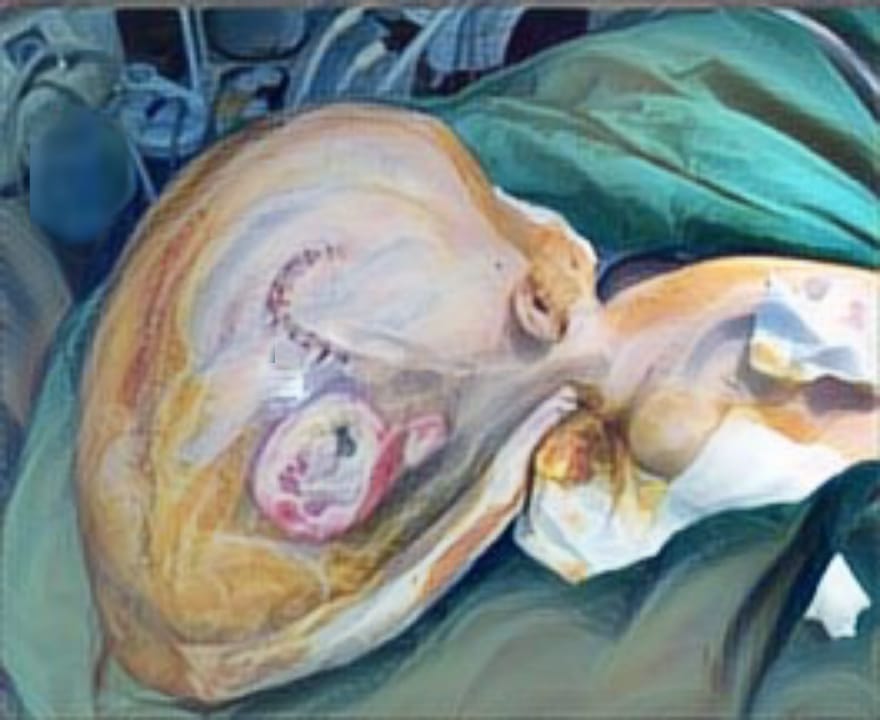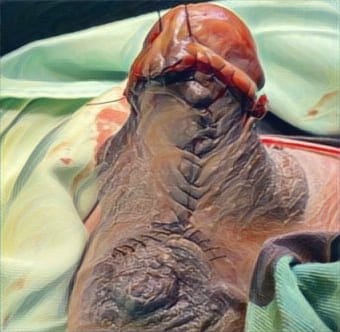PREDISPOSITION FACTORS ANALYSIS FOR FOURNIER'S GANGRENE DEFECTS CLOSURE COMPLICATION
Downloads
Highlights:
- Fournier's gangrene remains a serious condition with a relatively high mortality rate.
- Early identification of predisposing factors, combined with invasive and aggressive treatment approaches, is crucial in mitigating morbidity.
Abstract:
Introduction: Fournier's gangrene is a rare and rapidly progressive, necrotizing fasciitis affecting the external genitalia and perineum. Based on the case series that have been reported, the incidence rate of this case is 88% with a mortality rate of 20%-40%. The study aims to share our policy in managing Fournier's gangrene and identifying risk factors that can affect the outcome of defect closure.
Methods: The medical records of 10 patients with Fournier's gangrene who presented at the Dr. Soetomo Hospital Surabaya from January 2017 to December 2018 were reviewed retrospectively. We analyzed the characteristics of the patients, risk factors, methods of defect closure, and case outcome. There are 10 Fournier's gangrene patients at Dr. Soetomo Academic General Hospital from January 2017 to December 2018. We analyzed the patient's medical records retrospectively on the patient's characteristics, risk factors, method of closing Fournier's gangrene defects, and the final outcome of the case.
Results: There were ten men enrolled in the study, and the mean age was 49.3
± 11.51 years. All patients received broad-spectrum antibiotic therapy, and extensive surgical excision. This study found that diabetes mellitus and uncontrolled patient blood sugar levels, statistically there is no effect on failure of defect closure in Fournier gangrene patients, but clinically, the relative risk value shows that blood glucose levels have a risk factor of 6 times. increasing the incidence of failure to close the Fournier gangrene defect.
Conclusion:Fournier's gangrene is still considered a severe disease with fairly high mortality rate. Early recognition of predisposition factors associated with invasive and aggressive treatment options is very important in efforts to to reduce morbidity.
Karthikeyan G, Kumarasenthil M. A Study on Fournier's Gangrene. 2017; 4(7): 1519–23.
Ahmad I, et al. Medial Thigh Flap: An Eminent Method of Reconstruction of Scrotal Defect Following Fournier's Gangrene. 2018.
Oymacı E, et al. Evaluation of factors affecting mortality in Fournier's Gangrene: Retrospective clinical study of sixteen cases. 2014; 85–9.
Sorensen MD, Krieger JN. Fournier's Gangrene: Epidemiology and Outcomes in the General US Population. 2016; 98195: 249–59.
Sparenborg JD, et al. Fournier's gangrene: a modern analysis of predictors of outcomes. 2019; 8(4): 374–8.
Karian LS, et al. Reconstruction of Defects after Fournier Gangrene: A Systematic Review. 2015; 155–69.
Bhatnagar MM. Fournier's gangrene: A review of 110 cases for a etiology, predisposing conditions, microorganisms, and modalities for coverage of necrosed scrotum with bare testes. 2008.
Montrief T, Long B, Koyfman A, Auerbach J. Fournier gangrene: A review for emergency clinicians. J Emerg Med. 2019. 1–13.
Copyright (c) 2020 Bayu Fasi Bermani, Sitti Rizaliyana, Ira Handriani

This work is licensed under a Creative Commons Attribution-ShareAlike 4.0 International License.
JURNAL REKONSTRUKSI DAN ESTETIK by Unair is licensed under a Creative Commons Attribution-ShareAlike 4.0 International License.
- The journal allows the author to hold copyright of the article without restriction
- The journal allows the author(s) to retain publishing rights without restrictions.
- The legal formal aspect of journal publication accessbility refers to Creative Commons Attribution Share-Alike (CC BY-SA)




















